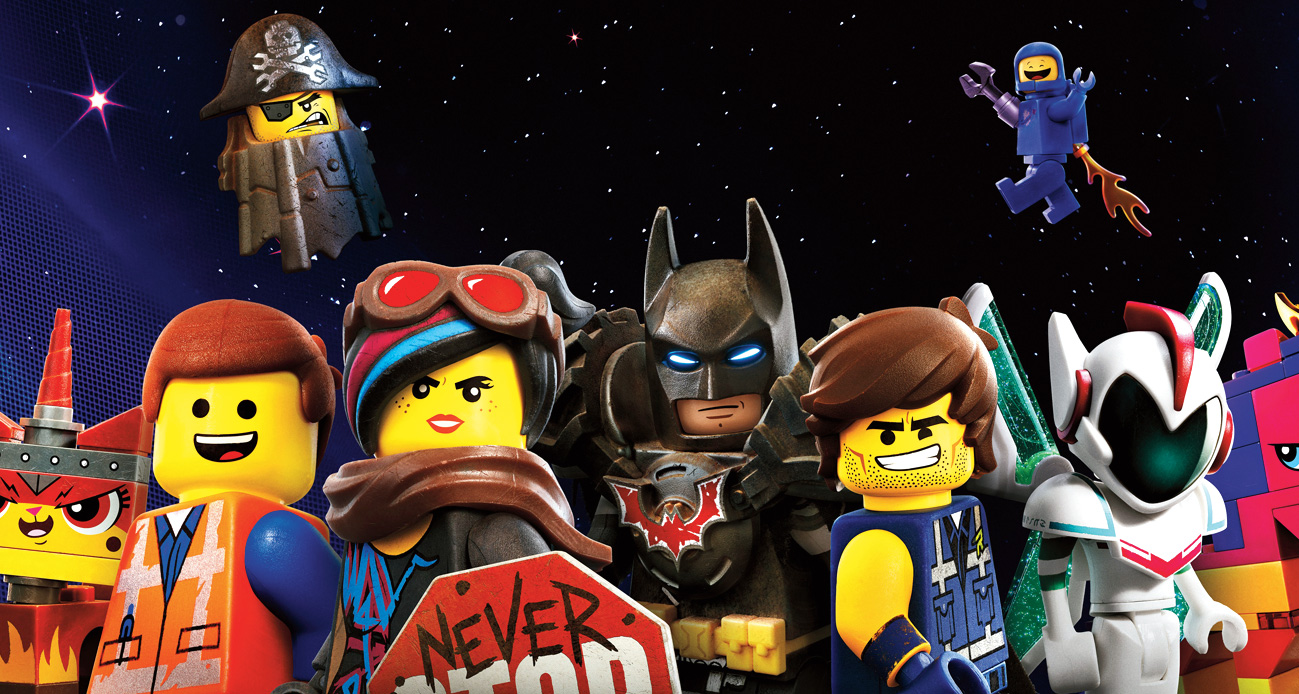The new animated Lego movie is pretty much like the last one. Or maybe I’m thinking of another one, not that it much matters. There are differences between editions, most fairly negligible. The unifying factor, to note the obvious about the state of big-screen children’s entertainment, is that they are all feature-length commercials. The Transformers series helped pave the way for Legos by flipping the old idea that movies (like Star Wars) were the creative source for the licensed merch, the lunchboxes and action figures. Now, toys, board games and so on are sometimes the originating point.
This isn’t news; I know it, you know it. But it seems worth repeating again and ad infinitum, especially given that The Lego Movie 2: The Second Part isn’t as distractingly fun, shiny and bright as the more satisfying franchise instalments. It drags and sometimes bores, which makes it easier for your mind to drift elsewhere, to thoughts of family, deadlines, chores, the creative impoverishment of the big studios and the casual, fundamentally corrupt commercial exploitation of the child audience. Put differently, what distinguishes this from the better Lego movies is that they’re good commercials.
The new one was written by Phil Lord and Christopher Miller, the franchise’s brain trust, and directed by Mike Mitchell, whose credits include Trolls, another toy-based feature. The Lego Movie 2 mostly takes place in Bricksburg, the happy town where once upon a time in the buoyant 2014 movie, Emmet (voiced by Chris Pratt), an upbeat dude in an orange vest, triumphed to become a heroic master builder. Five years later, life in Bricksburg has turned into a George Miller-esque dystopian hellscape. Emmet still looks on the sunny side, but everyone else, including his pal, Lucy (Elizabeth Banks), looks like Lilliputian refugees in their own decrepit and sand-swept Mad Max.
That sounds more promising than what transpires in the movie, a busy, noisy clutter of action sequences, pop-cultural allusions, life lessons and cute critters. The clever if rather cynical, self-reflexive back story involves live-action scenes of a bickering big brother and little sister who, unbeknown to Bricksburg, are the true master builders. The children’s disharmony makes trouble in their play world, draining it of colour and optimism; in other words, everything is not awesome, to borrow the franchise’s insanely catchy theme song. There’s a tidy message here: Be nice to your kid sister, which is supernice advice especially because the movie was produced, directed and written almost entirely by men.
The exception is the animation director, Trisha Gum, who worked with Mitchell on the movie’s look and feel, which is by turns immersive and wittily distancing, as when the Bricksburg story is interrupted by a shot of a toy dangling from a string. One pleasure of the Lego movies is how they personalise generic plastic bricks, creating a sense of life by combining scratches and other signs of the human hand — as if a child had used and reused these toys — with distinct, caricatured voices. Will Arnett’s demented take on Batman remains the standout, and it’s disappointing that he isn’t given more to do. In line with the live-action siblings, the under-inspired Emmet and Lucy drive the Bricksburg part.
Much of the story involves an eerily smiley alien land (shades of Camazotz in A Wrinkle in Time) where Batman is to marry the polymorphous queen (Tiffany Haddish). Every so often, the kids and their mom (Maya Rudolph) pop up in the live-action scenes, and their family dissonance creates chaos and intimations of doom in Bricksburg until it doesn’t.
The moral is that we should play nice, but also buy truckloads of Legos. In this respect, this sales pitch fits in with something that Walt Disney, a marketing genius, once said about his company not catering “to the child but to the child in the adult”. He was talking about his films’ viewers, who also happened to be the folks destined to foot the toy bill.











